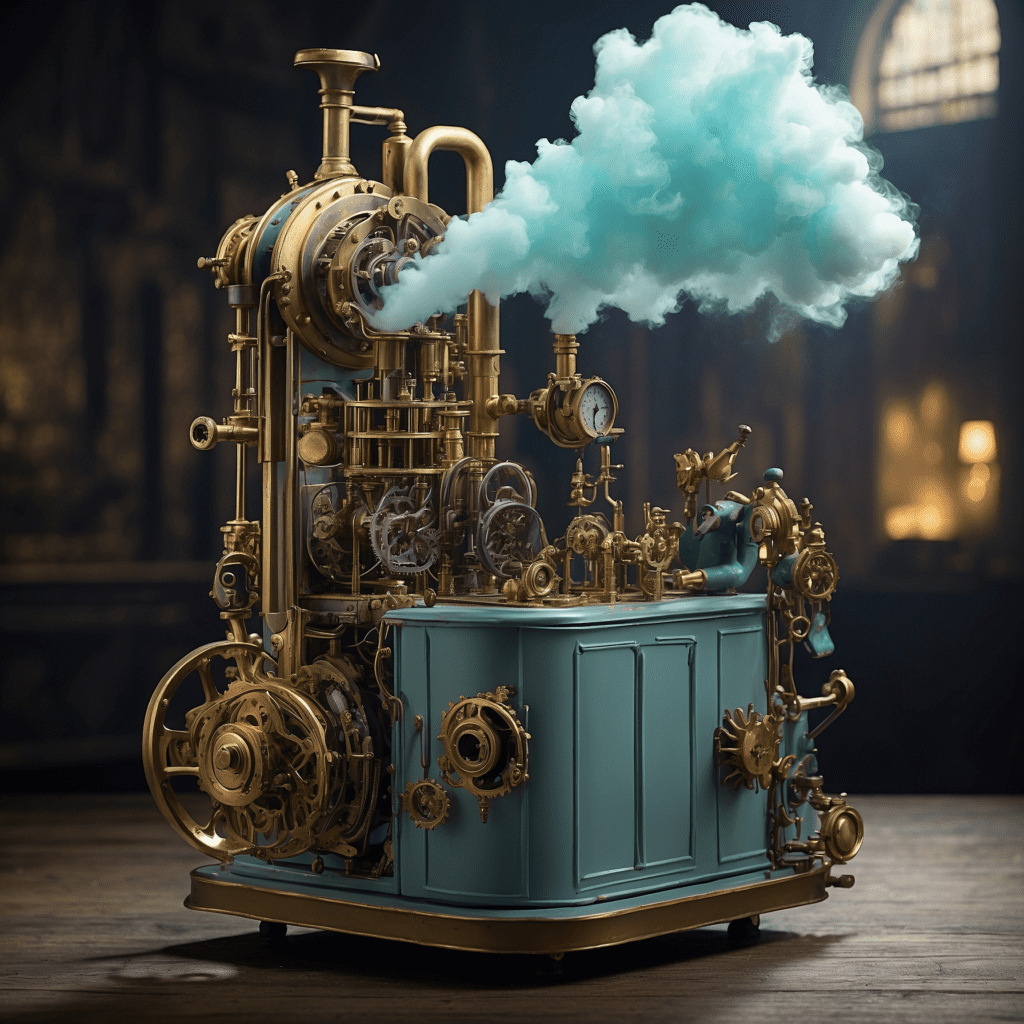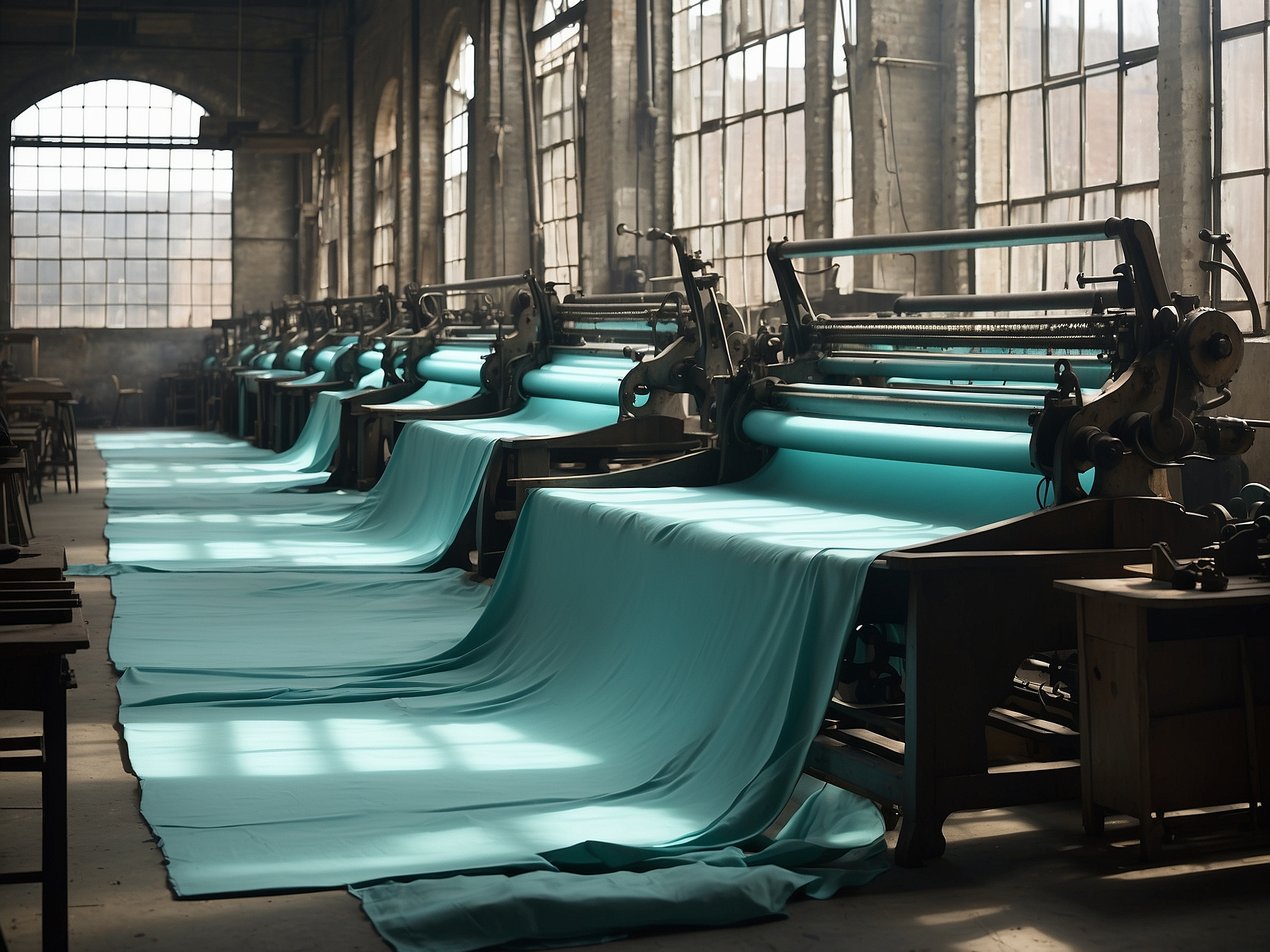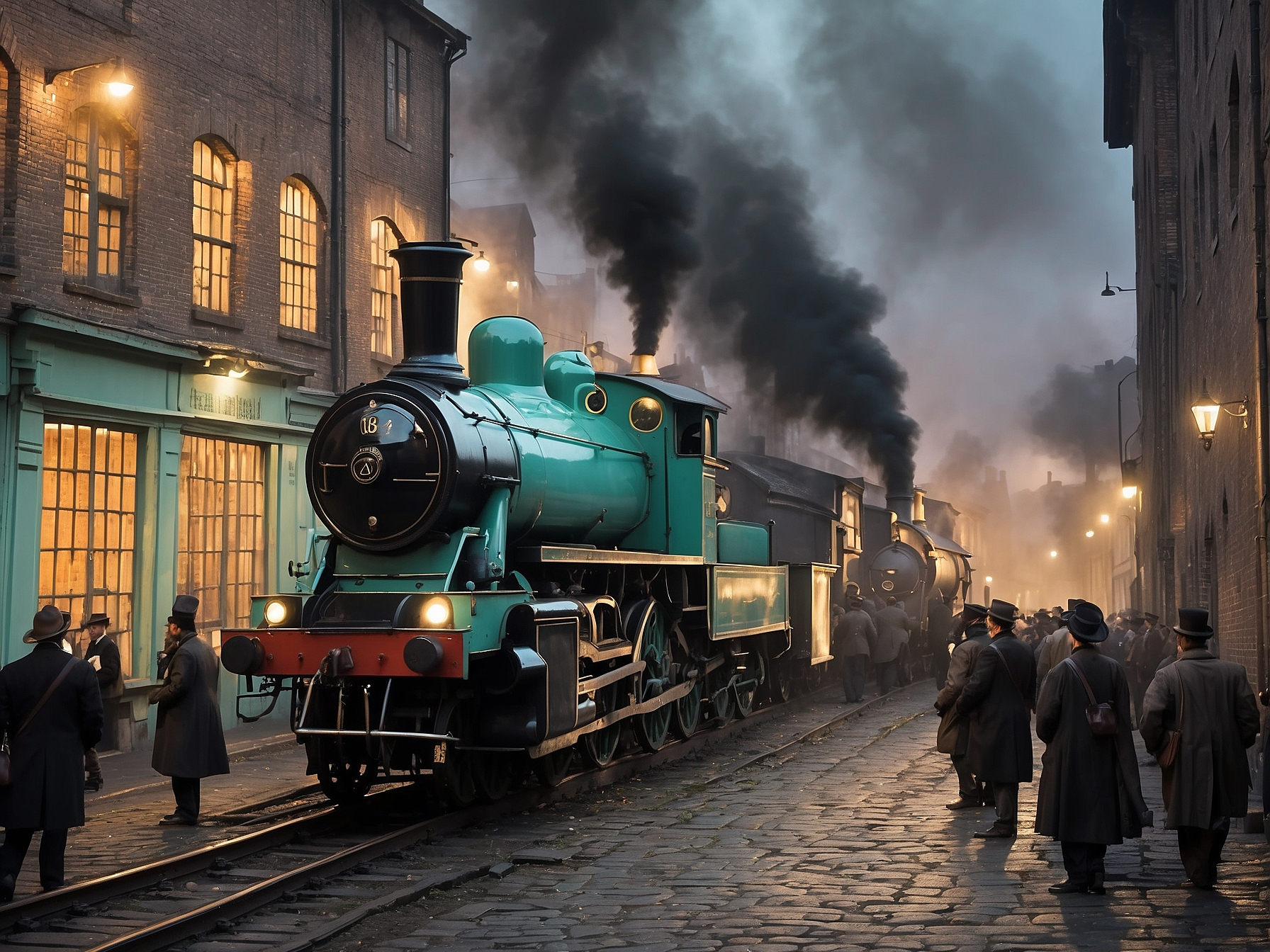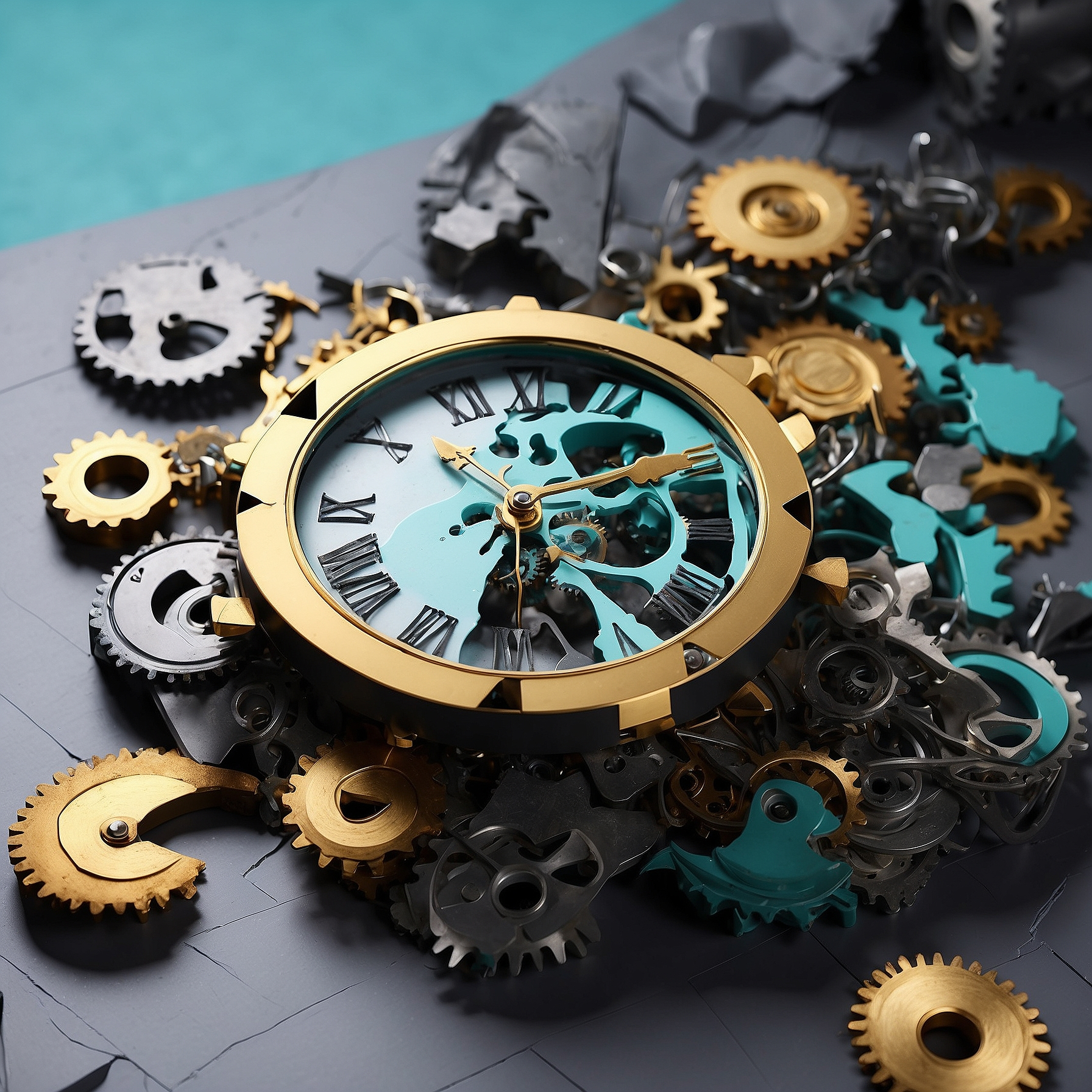So, the European Industrial Revolution—sounds fancy, right? Picture this: It’s the 1700s, and Great Britain decides it’s time to shake things up. They kick off an era where machines don’t just help humans—they practically take over the workload. Think of it as humans handing over the keys to the machines and saying, “Go ahead, make stuff faster than we ever could.” And boy, did they deliver.
This was a time when making goods went from being a painstaking manual process to a high-speed race of mass production. Machines were humming, factories were booming, and people were wondering what the heck just happened. Spoiler: This massive shift is what we now call the First Industrial Revolution. And no, it wasn’t all steam engines and coal mines—though those were a big part of the story.

In this article, we’re diving deep into the what, why, and how of the European Industrial Revolution. We’ll explore why it kicked off in Europe (hint: it wasn’t just luck), how it flipped society on its head, and the lasting impacts that are still felt today. Grab a cup of tea (or something stronger), and let’s get rolling.
European Industrial Revolution in full swing
Related: What Caused the Second Industrial Revolution?
European Industrial Revolution Explained
Alright, let’s break it down. The Industrial Revolution in Europe was like the ultimate upgrade package for society. Imagine going from horse-drawn carriages to steam-powered locomotives in what feels like overnight. It all kicked off in Great Britain (because they just had to be first) and was a period of massive technological innovation. We’re talking about machines taking over tasks that humans had been doing manually for centuries.
This wasn’t just about making life a little easier. It was a seismic shift from hand production to machines, the rise of factory systems, and new ways of manufacturing everything under the sun. Machine tools were developed, steam and water power were harnessed like never before, and industries like textiles were completely transformed.

Textiles, by the way, were the big cheese in this story. They were the dominant industry, soaking up capital investments, employing masses of people, and driving technological advancements. In other words, if the Industrial Revolution were a high school prom, textiles would be crowned king and queen.
When was the Industrial Revolution in Europe?
The Industrial Revolution in Europe kicked off around 1760 in Great Britain. It was like Britain’s exclusive party that everyone wanted an invite to. Eventually, the rest of Europe crashed the party—starting with Belgium and France—and by the mid-19th century, even the German states joined the industrial shindig.
So why was Britain the first to dive into this industrial frenzy? Well, they had a leg up with abundant resources, a booming economy, and a network of colonies feeding them raw materials. Plus, they weren’t shy about showing off their new toys. British entrepreneurs were eager to export their industrial expertise, and other European nations were all ears (and open wallets).
How did the Industrial Revolution change Europe?
Oh boy, where do we start? The Industrial Revolution flipped Europe on its head. It turbocharged economies, boosted populations, and transformed daily life. Average incomes started climbing like never before. For the first time, the general population saw a consistent rise in their standard of living—though some party poopers argue it took until the late 19th century for the real benefits to kick in. Either way, it was a game-changer.
Before this industrial boom, Europe’s GDP per capita was like a flat line—no pulse. Then, the Industrial Revolution came along and shouted, “Clear!” and shocked the economy to life. Economic historians often dub this period as one of the most significant events since humans started farming and herding animals. So, yeah, it’s kind of a big deal.
The revolution didn’t stay put in Britain. Mechanized spinning kicked things off in the 1780s, steam power revved up, and iron production followed suit. Mechanized textile production spread to continental Europe and the United States by the early 19th century. Innovations like steamships, locomotives, and advanced iron smelting were the talk of the town—or rather, the continent.
Check out: The Industrial Revolution and Its Consequences
Why did the Industrial Revolution start in Europe?
Why Europe, and why Britain specifically? Well, it’s like asking why the Beatles became famous—they had the right mix at the right time. Europe had high agricultural productivity, which meant fewer people needed to work the land and more could work in factories. They had natural resources like coal and iron coming out of their ears. Add in a dash of political stability, a sprinkle of entrepreneurial spirit, and a bucketload of capital ready to invest. Boom—you’ve got yourself an Industrial Revolution.
Once Britain lit the industrial fire, the rest of Europe couldn’t help but feel the heat. British entrepreneurs were practically handing out blueprints for success, and European nations were eager students. It started in Belgium and France, and by the mid-19th century, the German states jumped on the industrial bandwagon. It was like the ultimate FOMO (Fear of Missing Out) scenario.
Causes of the Industrial Revolution in Europe
- Capitalism
- European Imperialism
- Mining of Resources
- Agricultural Revolution
- Technological Innovations
Let’s dive into what really sparked this industrial wildfire:
Capitalism
First up, capitalism—the economic system that lets the wealthy do their thing with minimal government interference. In the 18th century, Britain was a hotbed for laissez-faire capitalism. Translation: The government stepped back, and private individuals stepped up. They made trade and industry all about the profit, baby!
Before capitalism stole the show, Europe was all about mercantilism, where governments had their fingers in every pie. But capitalism told the government to take a hike, allowing people to invest, trade, and innovate without as much red tape. Wealthy British entrepreneurs didn’t need a second invitation—they started investing heavily in factories and mines, chasing profits like kids after an ice cream truck.
This flood of private investment was a key driver of the Industrial Revolution. Capitalism provided the motivation and the means. It was like adding rocket fuel to a bonfire.
European Imperialism
Next, European Imperialism—the original “global supply chain.” European nations were expanding their empires, snapping up colonies left and right. This wasn’t just for bragging rights; it was about resources and markets. Colonies provided raw materials that Europe didn’t have enough of, like cotton and rubber. They also served as markets to sell the mass-produced goods coming out of European factories.
Think of it this way: Imperialism was Europe’s way of getting bulk discounts on raw materials while having a guaranteed customer base. It’s like owning the farm and the supermarket. Convenient, huh?
Mining of Resources
You can’t run an industrial revolution without fuel—literally. Coal and iron were the dynamic duo powering Europe’s industrial binge. Britain, in particular, was sitting on massive reserves of both. With coal fueling the steam engines and iron building the machines and infrastructure, Britain’s resource game was on point.
As demand surged, mining techniques improved. It was a cycle: more coal led to more steam engines, which led to more coal mining. It’s the industrial version of “the chicken or the egg,” but with more soot and sweat.
Agricultural Revolution
Before factories, people had to eat, right? The Agricultural Revolution revamped farming with new techniques like crop rotation, selective breeding, and better tools. These innovations meant fewer people were needed on farms, freeing up a workforce for the new factories.
Plus, with more efficient food production, populations grew. More mouths to feed, but also more hands to work. People flocked to cities in search of jobs, accelerating urbanization. It was like everyone got an invite to the biggest job fair in history.
Don’t forget the Enclosure Movement, which turned common land into private property. Small farmers were pushed off their land, nudging them toward industrial centers. It’s a bit harsh, but it filled the factories with eager workers.
Technological Innovations
Last but definitely not least, tech innovations were the engines (sometimes literally) of the Industrial Revolution. Britain couldn’t grow enough cotton, but they could sure spin it. Inventors like James Kay and James Hargreaves revolutionized textiles with inventions like the flying shuttle and the Spinning Jenny.
Then came the water frame and the steam engine, courtesy of James Watt. These innovations didn’t just speed up production—they exploded it. Factories could produce goods at an unprecedented scale, and steam power meant they weren’t tied to water sources anymore. They could set up shop anywhere, and they did.
Technological innovation was like the secret sauce that made all the other ingredients come together. Without it, the Industrial Revolution would have been more of an Industrial Fizzle.
See also: Social Effects of the Industrial Revolution
Positive and negative effects of the Industrial Revolution in Europe

The Industrial Revolution was a double-edged sword. Positives included mass production making goods cheaper and more available, technological leaps, and better transportation. Negatives? Oh, just minor things like terrible working conditions, rampant child labor, environmental pollution, and widening social inequality. So, you win some, you lose some.
How the Industrial Revolution Changed European Society
- Factory System
- Changes in Food Supply and Agricultural Practices
- Inadequate Housing and Poor Sanitation
- Improvement in Water Supply
- Mass Production
- Improvement in Clothing
- Increase in Consumer Goods
- Population Boom
- Urbanization
- Dramatic Changes for Women
- Shift in Social Structure
- Poor Working Conditions
- Child Labor
- Environmental Pollution
So, how did the Industrial Revolution flip European society upside down? Let’s unpack these changes one by one.
Factory System
Before the Industrial Revolution, production was a home affair. People made goods by hand in what’s known as the cottage industry or the putting-out system. It was quaint but slow—kind of like dial-up internet. Then came factories, the high-speed broadband of production. Machines congregated under one roof, operated by workers following strict schedules. Productivity skyrocketed.
This shift to the factory system meant workers had to adapt to new disciplines and routines. No more leisurely crafting goods at home; it was all about the time clock and meeting production quotas. It was a tough adjustment for many, but it laid the groundwork for modern industry.
In short, the factory system turned production into a team sport, with all the pros and cons that come with it.
Changes in Food Supply and Agricultural Practices
The Industrial Revolution didn’t just affect factories; it also shook up agriculture. Initially, agricultural productivity took a hit as people left farms for factory jobs. But technology came to the rescue with new machinery, pesticides, and fertilizers that boosted yields.
Efficiency in food production improved, allowing fewer farmers to feed more people. It’s like getting more pizza slices from the same pie—everyone’s happy.
However, this shift also meant that those who remained in farming had to adapt to new technologies and methods. It was adapt or get left behind.
Inadequate Housing and Poor Sanitation
As cities swelled with incoming workers, housing couldn’t keep up. Overcrowded slums became the norm, and sanitation was, let’s say, less than ideal. Think open sewers, contaminated water, and streets that doubled as garbage dumps.
The industrial working class lived in cramped, squalid conditions, while the middle class enjoyed more comfortable lifestyles. The stark contrast was like night and day.
Eventually, public health acts were passed to address these issues, but for many, it was too little, too late. The early industrial cities were a public health nightmare.
Improvement in Water Supply
Not all changes were for the worse. The Industrial Revolution brought improvements to water supply systems. Steam-powered pumps and iron pipes replaced older methods, providing cleaner and more reliable water to urban populations.
This advancement was a big deal for public health, reducing the spread of waterborne diseases. It’s one of the silver linings in an era fraught with challenges.
Mass Production
The name of the game was mass production. Factories could churn out goods at unprecedented rates, making products cheaper and more accessible. This democratization of goods improved the standard of living for many.
Consumers had more choices, and competition drove innovation and quality improvements. The free market was in full swing, and it was a consumer’s paradise—assuming you had the money to spend.
However, mass production also meant that artisanal skills were less valued, and many craftsmen found themselves out of work or forced to adapt.
Improvement in Clothing
Clothing got a major upgrade. With textile factories pumping out fabrics, clothing became more affordable and varied. The invention of the sewing machine made garments quicker to produce and allowed for more complex designs.
Fashion became a form of expression for the masses, not just the elite. People could afford to dress better, and they did.
The downside? The rise of sweatshops and exploitative labor practices in the garment industry—a problem that, sadly, persists in some forms today.
Increase in Consumer Goods
The shelves were stocked like never before. From household goods to luxury items, the variety and availability of products soared. This was the birth of consumer culture.
Shopping became a pastime, and ‘keeping up with the Joneses’ started to take hold. Mass consumption was the new normal.
This surge in consumer goods also led to advertising and marketing tactics designed to influence buying habits—a double-edged sword if ever there was one.
Population Boom
Thanks to better food production and medical advancements, populations exploded. Britain’s population quadrupled between 1800 and 1900. More people meant more workers and consumers—a cycle that fed the Industrial Revolution.
However, this rapid growth also strained resources and infrastructure. Schools, hospitals, and housing had to expand quickly, often without adequate planning.
The population boom was both a blessing and a curse, fueling economic growth while creating social challenges.
Urbanization
The migration from rural areas to cities accelerated. Urban centers became crowded hives of activity. This shift not only changed where people lived but how they lived.
Urbanization brought about new social dynamics, cultural exchanges, and unfortunately, new challenges like crime and poverty.
Cities became the heartbeat of nations, driving economic and cultural developments.
Dramatic Changes for Women
Women’s roles underwent significant transformations. Many entered the workforce, gaining a degree of economic independence. However, they often faced lower wages and poor working conditions.
The Industrial Revolution sowed the seeds for future movements advocating for women’s rights. It was a step forward, albeit one fraught with challenges.
Women had to juggle work and traditional domestic responsibilities—a double shift that was anything but fair.
Shift in Social Structure
The old social hierarchies started to crumble. A new middle class emerged, consisting of industrialists, businessmen, and professionals. This group enjoyed newfound wealth and influence.
Meanwhile, the working class labored in factories under harsh conditions. The gap between rich and poor widened, leading to social tensions.
Class consciousness grew, laying the groundwork for labor movements and calls for social reform.
Poor Working Conditions
Let’s not sugarcoat it—working conditions were dreadful. Long hours, low pay, and dangerous environments were the norm. Workers had little to no rights.
Accidents were common, and job security was virtually non-existent. It was a tough life, to say the least.
These harsh realities led to the rise of labor unions and the push for laws to protect workers—a struggle that would continue for decades.
Child Labor
Child labor was rampant. Kids as young as five worked in factories and mines. It was all hands on deck to meet production demands.
These children faced the same grueling conditions as adults, but with even less protection. Education took a backseat to labor.
Public outcry eventually led to child labor laws, but not before a generation of children sacrificed their youth to industrialization.
Environmental Pollution
The Industrial Revolution wasn’t kind to Mother Earth. Air and water pollution soared as factories spewed chemicals and waste without regulation.
Cities were cloaked in smog, and rivers turned into toxic streams. It was an environmental disaster in the making.
This led to some of the first environmental laws, but the damage set a precedent for industrial pollution that we still grapple with today.
Read also: Bracero Program Benefits
The Industrial Revolution was a period of great progress and profound challenges. It reshaped Europe in ways that are still felt today. From the rise of factories to the social transformations, its impact was enormous. Understanding this era is key to understanding the modern world.
